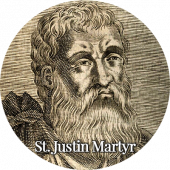
The northwestern corner of “Asia Minor” (today’s Turkey) represented to the ancient world the westernmost cusp of the huge, heaving landmass of Asia, stretching behind it all the way to Japan in the north and to New Guinea in the south. Mesopotamia, Persia, India and China all lie there, heavy with millennia of history and culture. And on that intruding tip we find the fabled city of Troy, an undisputed fact of history now that archaeology has unearthed multiple layers of a complex metropolis of almost prehistoric antiquity. From that eastern city of Troy, three voyages would be launched. Each would leave its mark on what would later be known as Europe.
Even the name of the continental newcomer would trace its story back to the East, as the Phoenician princess “Europa” was said to have been ravished by the king of the gods and brought to the shores of Greece. That is myth, which is “penultimate truth.” The three voyages, however, were more palpable than myth, and especially the third.
Our Greek cultural forefathers were forever interacting with the East. Their first great historical work (The Persian Wars, by Herodotus), and their first dramatic masterpiece (The Persians, by Aeschylus), both dealt with the inhabitants of what is today Iran. World history would have looked very different if the Greeks had not triumphed against the massively superior Persian Empire. But the Trojan connection goes even deeper than that. To begin with, that war predates the Persian War by centuries. In the latter war, the Greeks won, but they didn’t conquer; it was a conflict of successful self-defense. In the former war, both winners and losers launched myth- and history-making voyages. Troy haunts the Western imagination not as a defeated enemy, but as the stage of an iconic altercation destined to frame the emerging narrative of Europe from both sides of the contest.
On the winning side, Odysseus leaves Troy and undertakes his fabulous and prolonged voyage home to the peninsular country that – courtesy of the blind bard Homer – was soon to sing his story. Greece would begin to speak not only in sublime epic, lyrical and dramatic verse, but also in an idiom unmatched hitherto on Western lips: philosophical prose. A new wave of naturalistic sculpture would also rise out of that culture, fascinated artistically with the natural curves of the body, just as the new philosophy would be captivated by the natural trajectories of logic. And during this philosophical apotheosis, their distant past heroes’ struggle on that Asian coast would serve as their defining epic recollection. Generations of Greek schoolboys would henceforth memorize their Odyssey and Iliad, and learn what example teaches even to theory.
But that’s only half the story. On the losing side, another tale was told, with a plot just as momentous as that of the victors. Aeneas also left Troy, but he wasn’t going home to a Penelope; he was fleeing a home which was burning to the ground. Odysseus met obstacles when he got home, but he did get home. Aeneas began with obstacles, and they continued as he searched for a new domicile. At long last, he found his new home on the Western shore of Italy: Rome. Thus, Western civilization’s two European fountainheads – Greece with its philosophy and art, and Rome with its law and architecture – both look to a founding saga based on an ancient war on an Asian shore. And since Rome was fated to ultimately conquer Greece militarily (and in some way settle accounts after their forefathers’ defeat at Troy), it would no less decisively be conquered by Greece culturally, blown away by the latter’s love for beauty and wisdom.
Virgil’s Latin Aeneid is already worlds apart from Homer’s two epics in style and tone, although alike in scope and ambition. But the text that will recount the third voyage from Troy is so different from all three epics (and indeed from all earlier literature of any genre), it stands alone in the world of the written word. I refer of course to the New Testament, and to the episode in St. Paul’s missionary travels that brought him to that very tip of Asia that bore the ruins of Troy. It also saw a new literary genre arise without warning, and without precedent. We call it the Gospel.
At that western limit of Asia, St. Paul famously dreams of a Macedonian from across the Aegean Sea, pleading with him to come to the other shore (Acts 16,9). So often in religious history, the “other shore” has symbolized a decisive moment in one’s spiritual life – in Hinduism and Buddhism as a symbol of mosksha or nirvana, in Jainism the transcendent conquest heralded by the tirthankaras (the “ford-makers”). In Paul’s case, he himself is the one who is bringing liberation and enlightenment to that other shore. It is he who is fording the body of water that separates Asia from the Europe-to-be. And to the Hellenic fervor for aesthetics and dialectic, and to sober Roman jurisprudence and stately architecture, a new ingredient was injected. Adding to this civilizational recipe, Paul of Tarsus decided to act on a dream.
Centuries hence, the Celtic, Germanic and Slavic peoples of the north would inherit the fruits of this promiscuous Mediterranean mix, and the Europe we have known since the Middle Ages would begin to rise like a Gothic cathedral. But as the three major components – hailing from Jerusalem, Athens and Rome – begin to interact alchemically, something new in history was afoot. The world was never to look the same. Odysseus’s and Aeneas’s sea crossings were long and sinuous, but Paul’s was swift and direct. Still, all three voyages began in Troy, and all three voyages led – directly or indirectly – to wherever you are sitting right now.


